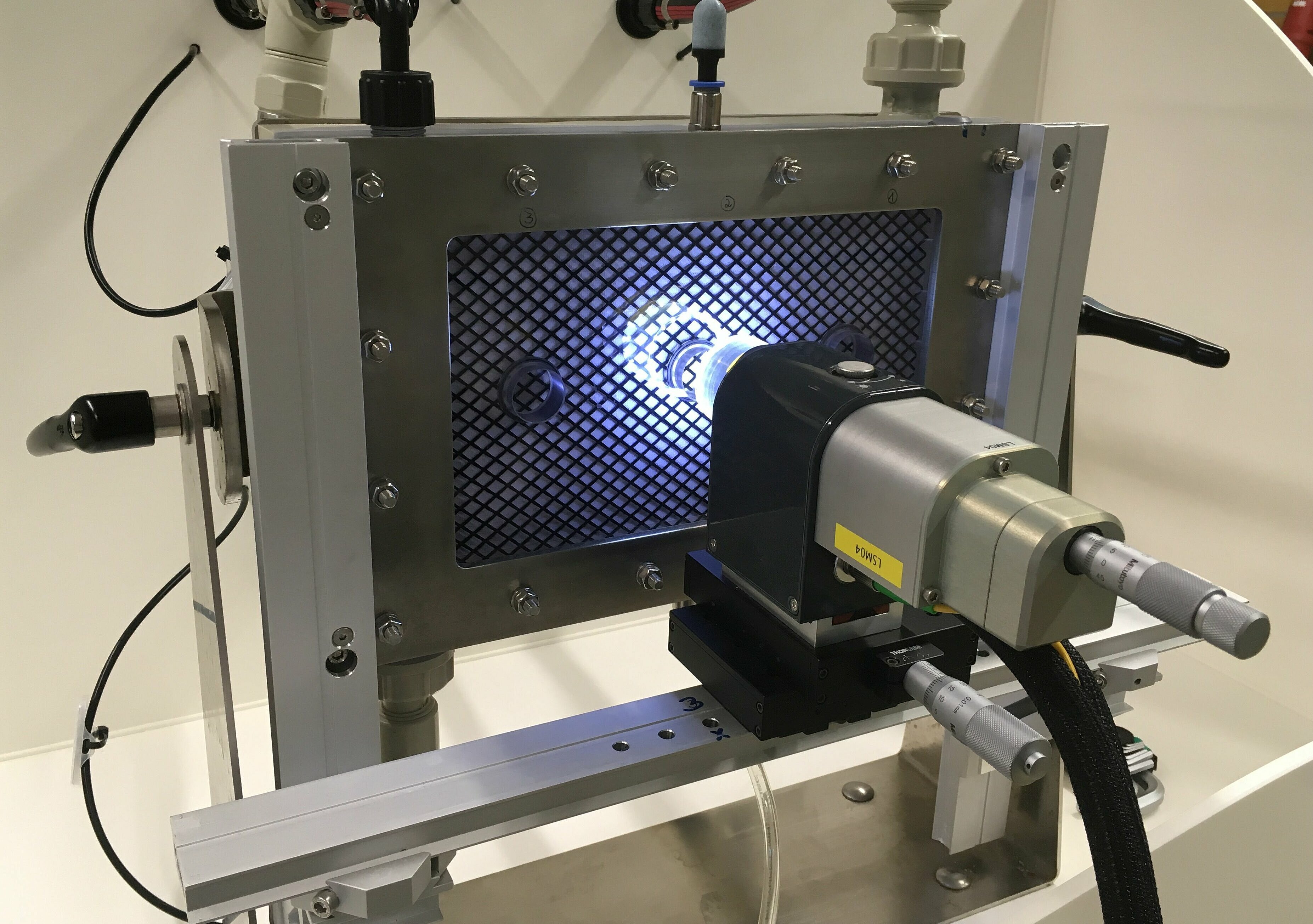
Imaging methods for process optimisation
Water resources are a valuable asset. The research center is therefore constantly working on the optimisation of water treatment processes using multiscale imaging methods.

Water resources are a valuable asset. The research center is therefore constantly working on the optimisation of water treatment processes using multiscale imaging methods.
The use of membrane based processes for (waste)water treatment (e.g. reverse osmosis, membrane distillation) are becoming increasingly widespread, although performance-limiting processes, such as scaling and (bio)fouling are not fully understood. As a result, we use comprehensive imaging methods, such as optical coherence tomography (OCT) to monitor the development of fouling. OCT is a non-invasive procedure and enables the in-situ analysis of the development of fouling during testing. Large areas of up to 16 mm x 16 mm are mapped in three dimensions in a short space of time (seconds to a few minutes). Fouling formation and structure are therefore digitally saved. OCT-data-sets are consequently analyzed to calculate parameters for process control and optimisation. This requires the use, adaptation and continued development of image evaluation routines.
One interesting area for OCT-monitoring correspond to the optimization of cleaning procedures. The starting time and duration of cleaning can be triggered by the fouling layer thickness and thus improving the efficiency of the cleaning as well as reducing the associated costs.